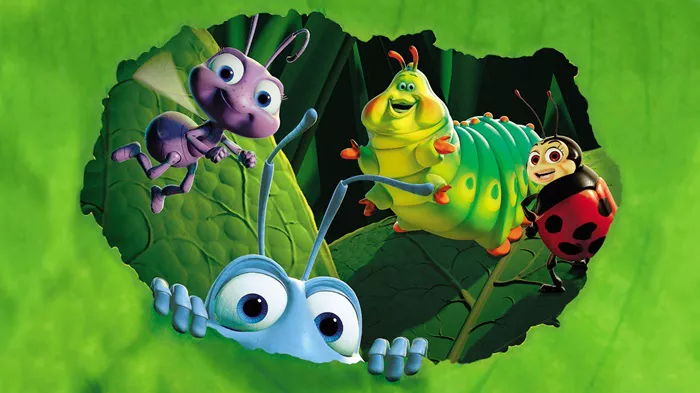Released in 1998, Pixar’s “A Bug’s Life” emerged as one of the most beloved animated films of its time, renowned for its innovative use of computer-generated imagery (CGI). As a pioneering project, it showcased the profound capabilities of CGI in creating a vibrant, immersive world from a bug’s perspective. This article delves into the various aspects of CGI technology used in “A Bug’s Life”, exploring how it was implemented to bring the story and its characters to life, and examining the broader impact of such technological advancements on the animation industry.
Understanding CGI in Animation
What is CGI?
Computer-Generated Imagery (CGI) refers to the process of creating art or photographic visuals using computer software. In the context of animation, CGI is employed to generate both static and dynamic images, allowing for the creation of characters, scenes, and special effects that are difficult or impossible to achieve with traditional techniques.
Evolution of CGI in Animation
The evolution of CGI has revolutionized the field of animation, providing artists and filmmakers with tools to unleash unprecedented creativity. CGI animation began to gain prominence in the late 1980s and early 1990s, with Pixar itself breaking ground with the release of “Toy Story” in 1995, the first-ever feature-length film made entirely with CGI. This set the stage for “A Bug’s Life”, which advanced the use of CGI technology even further.
The Making of “A Bug’s Life”
Conceptualization and Design
The creation of “A Bug’s Life” began with its conceptualization, where artists and animators brainstormed the film’s storyline, characters, and setting. The design process involved meticulous attention to detail to ensure that the characters were appealing and the environments felt lush and expansive, yet true to what a real insect might experience.
Character Creation and Animation
One of the critical challenges in “A Bug’s Life” was creating a wide array of insect characters, each with unique physical attributes and personalities. Utilizing CGI, animators were able to build intricate models of each character with distinctive textures that mimicked real-life insects while stylizing them to be endearing to the audience.
Environmental Rendering
Perhaps the most striking use of CGI in “A Bug’s Life” was in rendering the film’s environment. The world from a bug’s perspective was richly detailed, with towering plants and a ground-level viewpoint that offered an immersive experience. Pixar’s CGI technology enabled the creation of complex natural settings that had depth, texture, and vibrant colors, transforming ordinary locations into fantastical landscapes.
Technological Innovations in “A Bug’s Life”
Rendering Techniques
“A Bug’s Life” utilized advanced rendering techniques to achieve realistic lighting and shadows, which were crucial for creating the film’s lifelike yet whimsical atmosphere. The use of radiosity, a technique that simulates the way light interacts with surfaces, helped in achieving a more natural ambient lighting in the scenes.
Crowd Simulation
One of the technological highlights in “A Bug’s Life” was the development of a crowd simulation software called “Flik’s Army”. This tool was specifically created to animate hundreds of ant characters simultaneously without having to animate each one individually. This not only saved countless hours of manual labor but also added a dynamic layer to scenes featuring the ant colony, showcasing the potential of CGI for managing complex sequences.
Use of Real-Time Animation Tools
To streamline the animation process, Pixar developed real-time animation tools that allowed animators to make and view changes instantaneously. This innovation greatly enhanced the efficiency of the animation process, allowing for smoother workflows and more iterative approaches to animating scenes.
Impact on the Animation Industry
Setting New Standards
The success and technological achievements of “A Bug’s Life” set new standards in the animation industry. It demonstrated the possibilities of CGI, pushing other studios to also adopt and innovate new techniques in computer animation.
Inspiring Creativity and Innovation
“A Bug’s Life” not only pushed the boundaries of what could be achieved with CGI but also inspired a wave of creativity and technological innovation across the industry. This has led to the continual development of more sophisticated CGI tools and techniques, influencing countless animated films that followed.
Educational and Training Implications
The advancements demonstrated in “A Bug’s Life” have also impacted educational programs focused on animation, with institutions updating curricula to include training in CGI technologies and techniques that are now standard in the industry.
Conclusion
“A Bug’s Life” stands as a monumental achievement in the field of animation, primarily due to its pioneering use of CGI. From character design and environmental rendering to innovative use of new software for crowd simulation, the film not only captivated audiences with its charming story and characters but also showcased the vast potential of CGI technology. As we look back over two decades later, the legacy of “A Bug’s Life” continues to influence the animation industry, inspiring new generations of animators to explore the limitless possibilities of computer-generated imagery.

